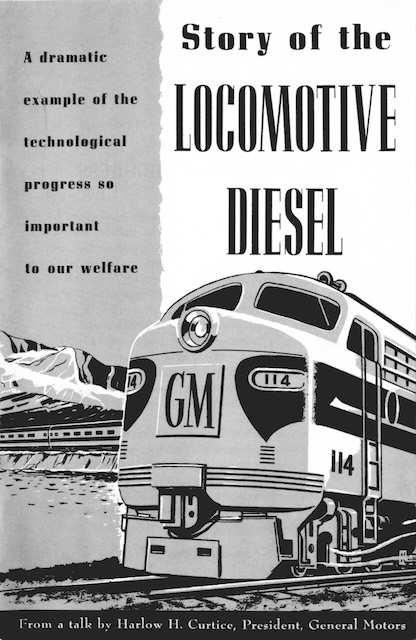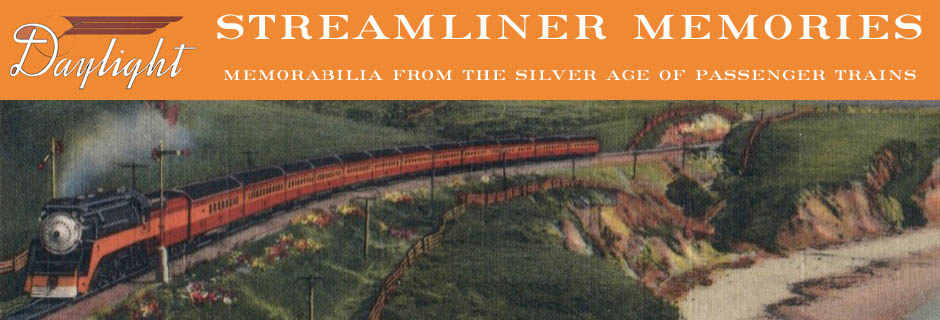In addition to images by Bern Hill, Greg Palumbo was nice enough to provide Streamliner Memories readers a number of booklets and other images from General Motors’ locomotive past. This particular booklet is a speech made by GM President Harlow Curtice (who, it seems likely, was one of the defenders of Bern Hill’s work) about this history of the Diesel locomotive.
 Click image to download a 1.8-MB PDF of this 16-page booklet.
Click image to download a 1.8-MB PDF of this 16-page booklet.
Curtice gives credit where credit is due, making Burlington President Ralph Budd the hero of the story. It was in 1932, says Curtice, that Budd first conceived of a lightweight, stainless steel train, air conditioned to allow high speeds without people needing to open windows on hot days, and powered by Diesels. But when Budd approached Charles Kettering, GM’s research director who had overseen the development of a two-stroke Diesel that was much lighter in weight than conventional four-stroke Diesels, Kettering “wouldn’t dare sell him an engine; he wasn’t even sure it would run.”
Budd persisted, and in June, 1933, GM “reluctantly agreed” to build an engine for Burlington’s motor trains, “but with no guarantees as to performance.” Curtice goes on to tell the story of the Burlington Zephyr‘s Denver-to-Chicago non-stop run, which was longer than any locomotive had ever gone without a stop and which almost didn’t happen due to a cracked bearing that was replaced just a few minutes before the train was due to leave Denver Union Station.
Despite the Zephyr‘s triumphant arrival at the Chicago Century of Progress Exposition in May 1934, Curtice admits that it took several more years to make Diesels reliable. “Rings, bearings, pistons, cylinder heads and other parts that now have a life of more than a million miles would fail after a scant forty thousand miles,” he said. “Wheels would crack. Electric motors would burn up.” Those problems were pretty much solved by 1940, allowing GM to become the nation’s dominant locomotive manufacturer for the next several decades.
“I am perfectly sure that the courage and vision and determination of Ralph Budd advanced by many years the age of Diesel on the railroads of America,” Curtice said. “Mr. Budd was the spark plug, so to speak, that fired the imagination of a group of great railroad men of that day.”
This booklet was handed out to “GM men and women,” so it seems odd that Curtice essentially gave most of the credit to Budd. But the booklet is based on a speech he gave to the American Institute of Consulting Engineers, whose members he hoped to inspire into doing more innovative work. “We need more such strides forward in our technology,” concluded Curtice, “and we need more Ralph Budds to spark them.”
